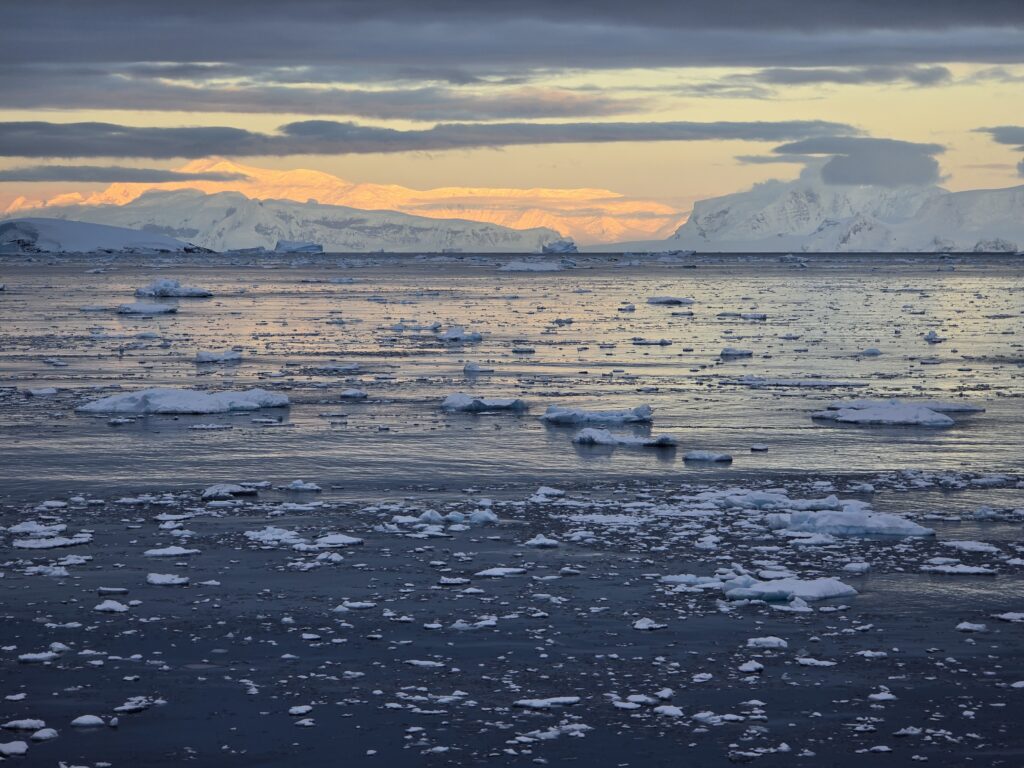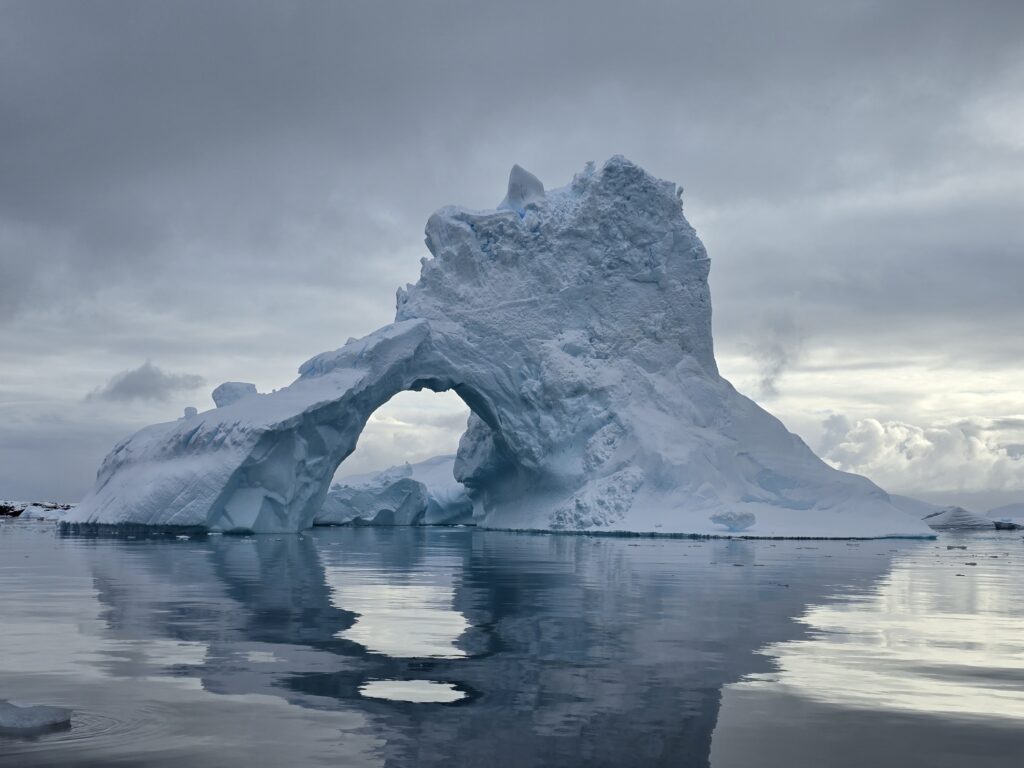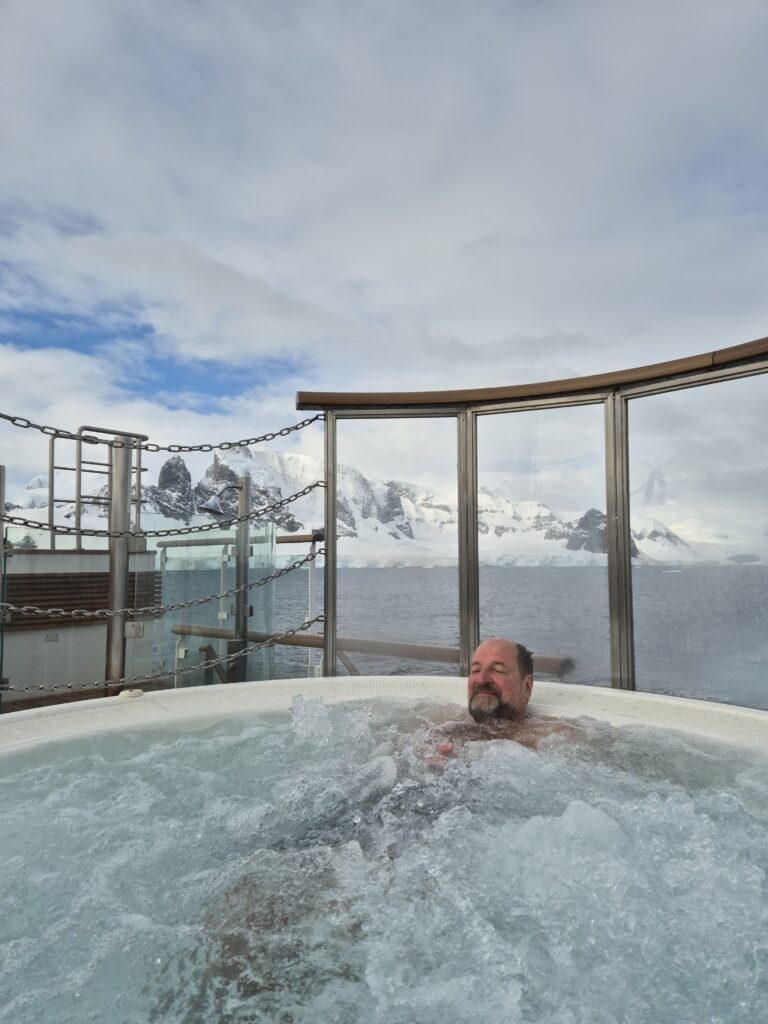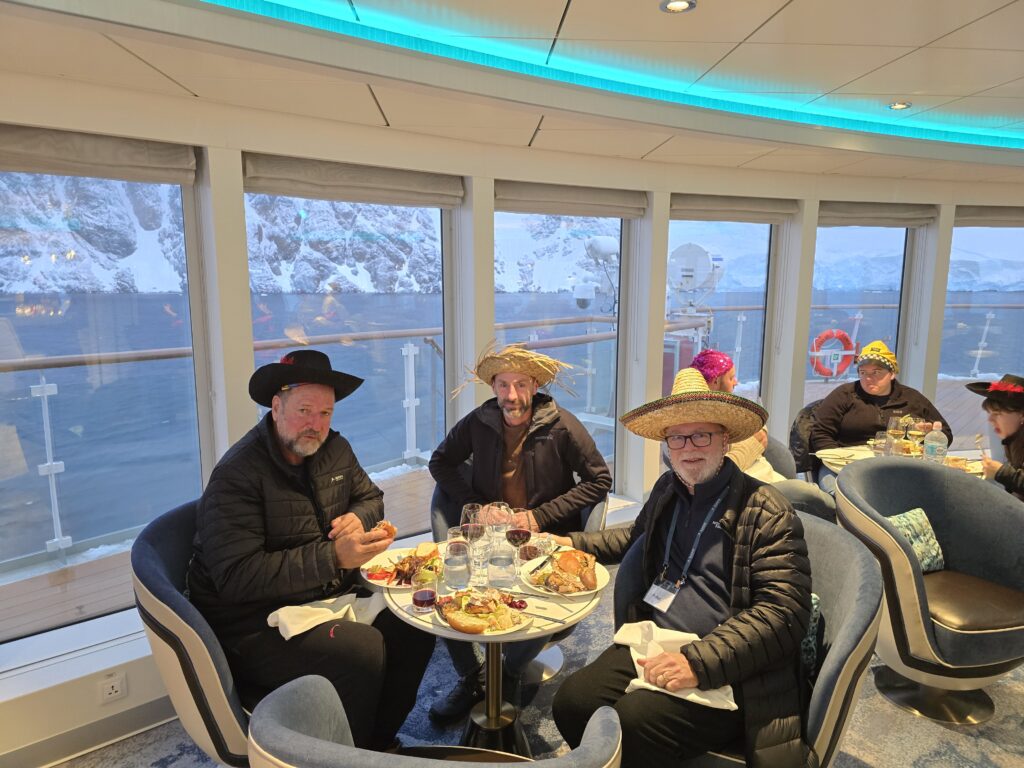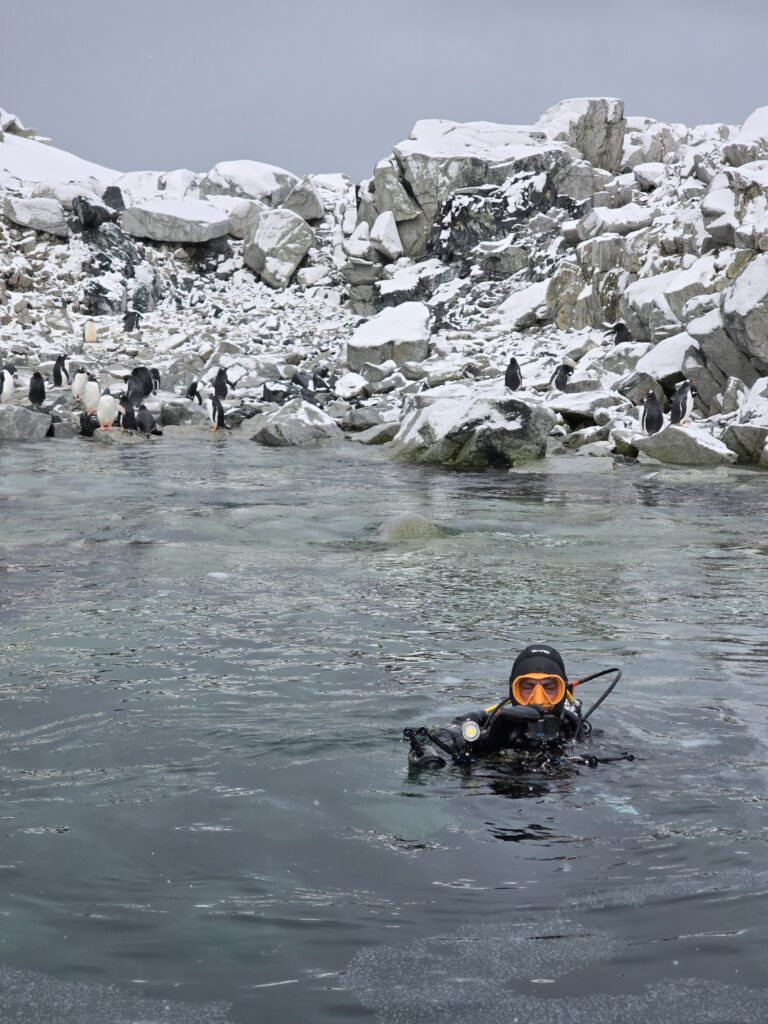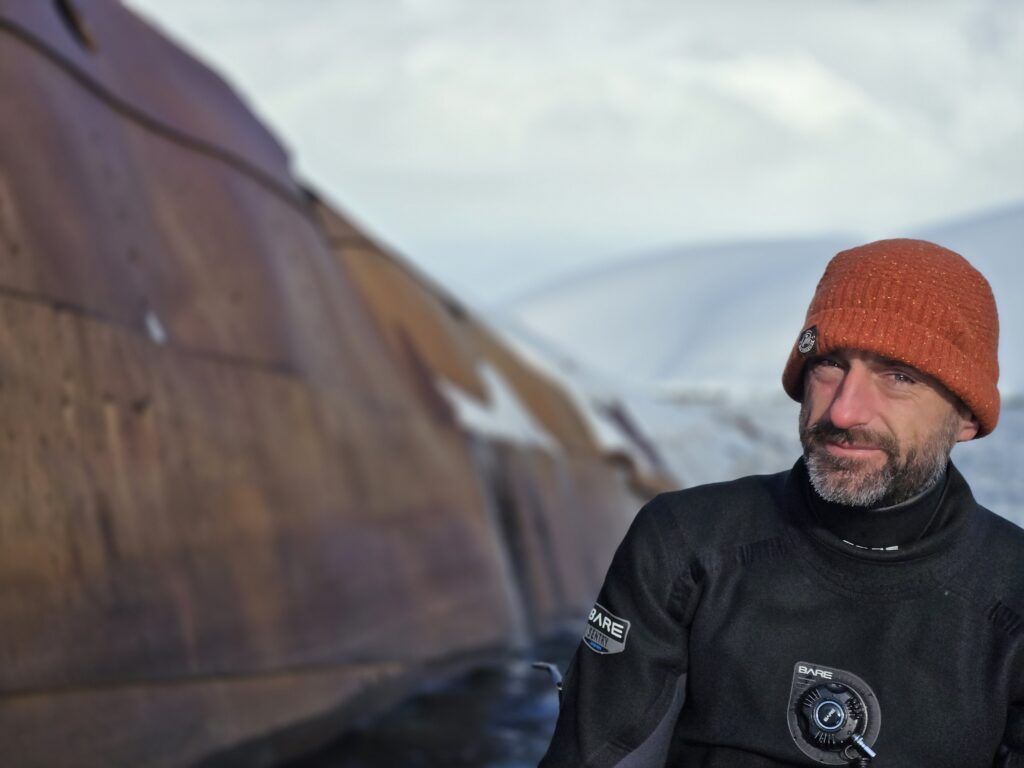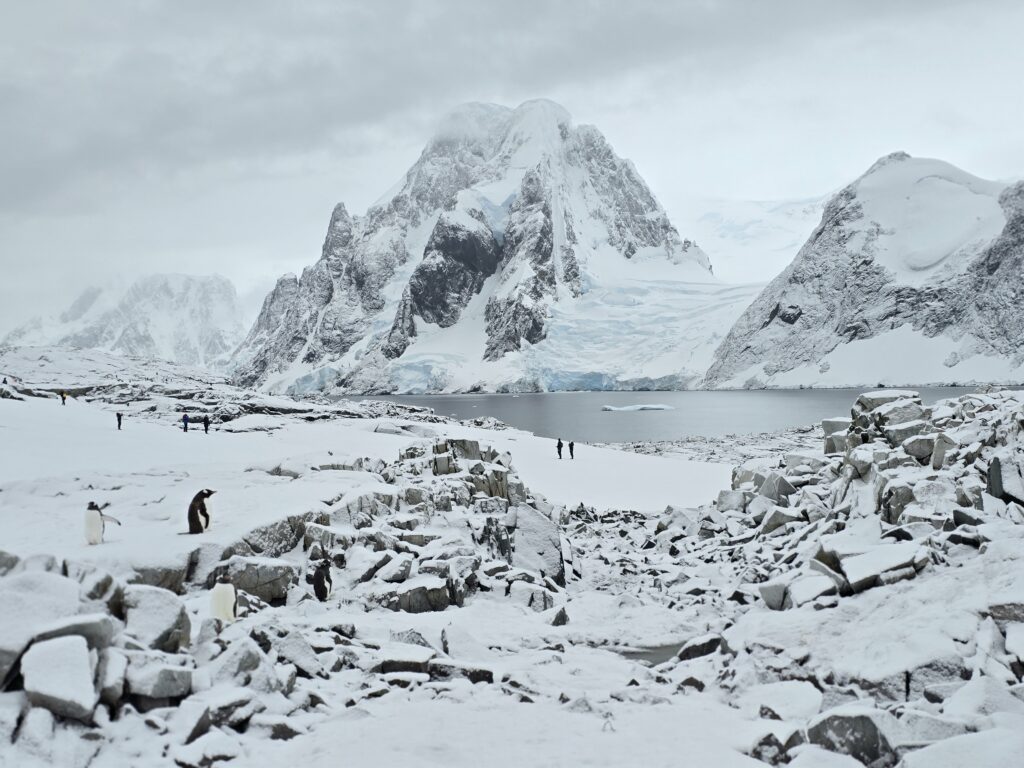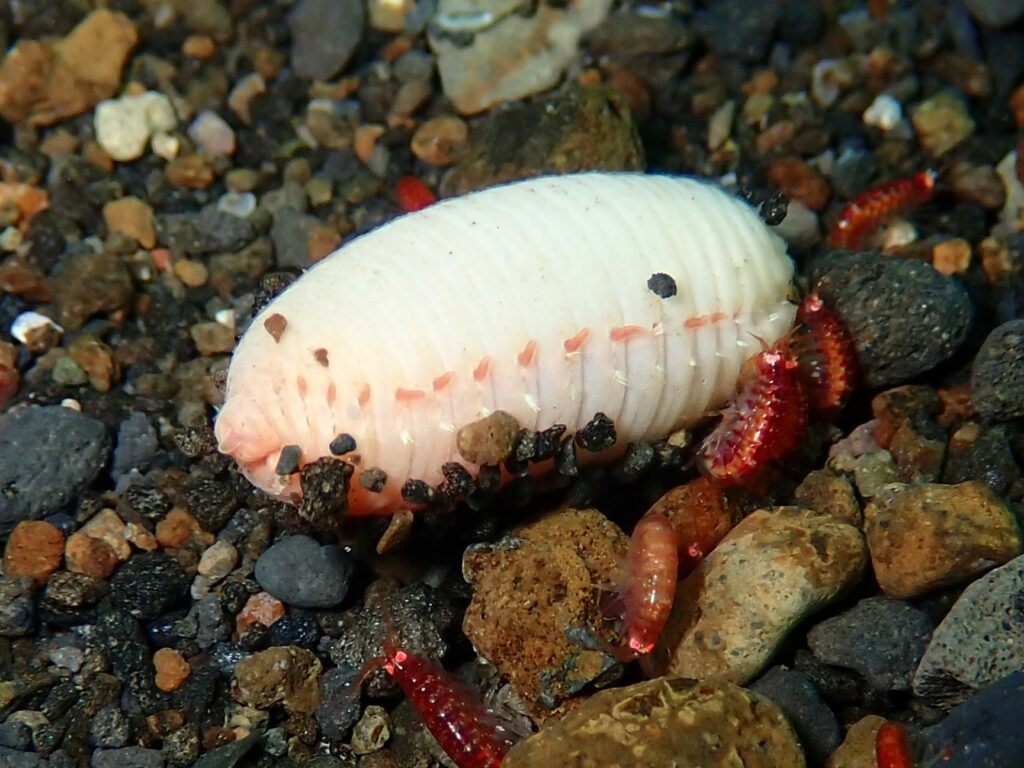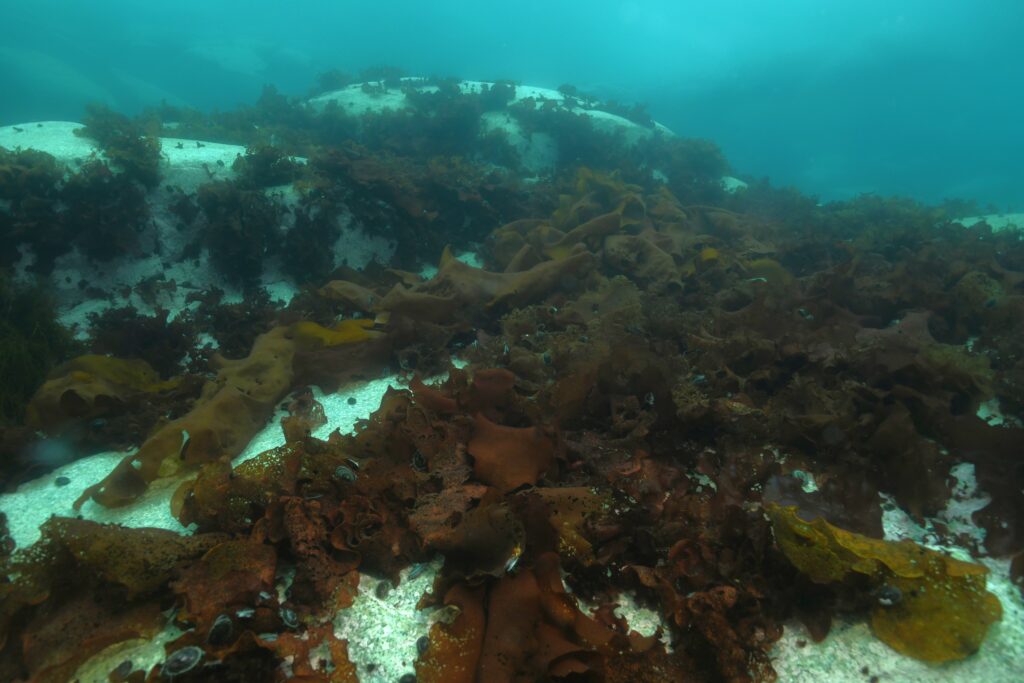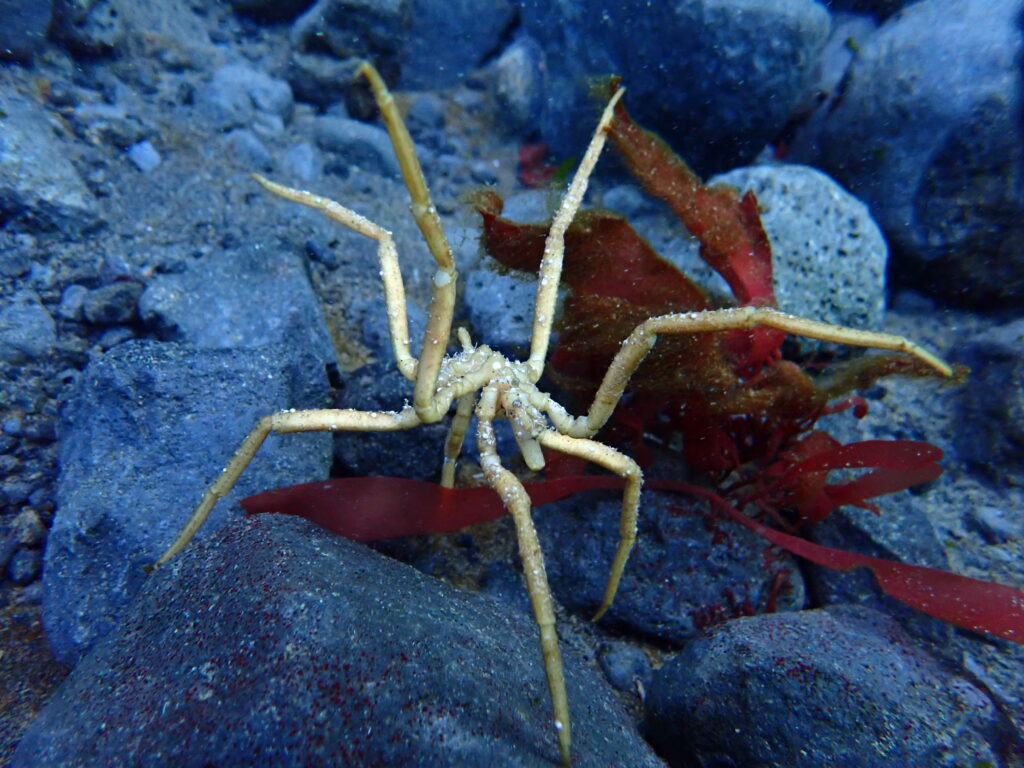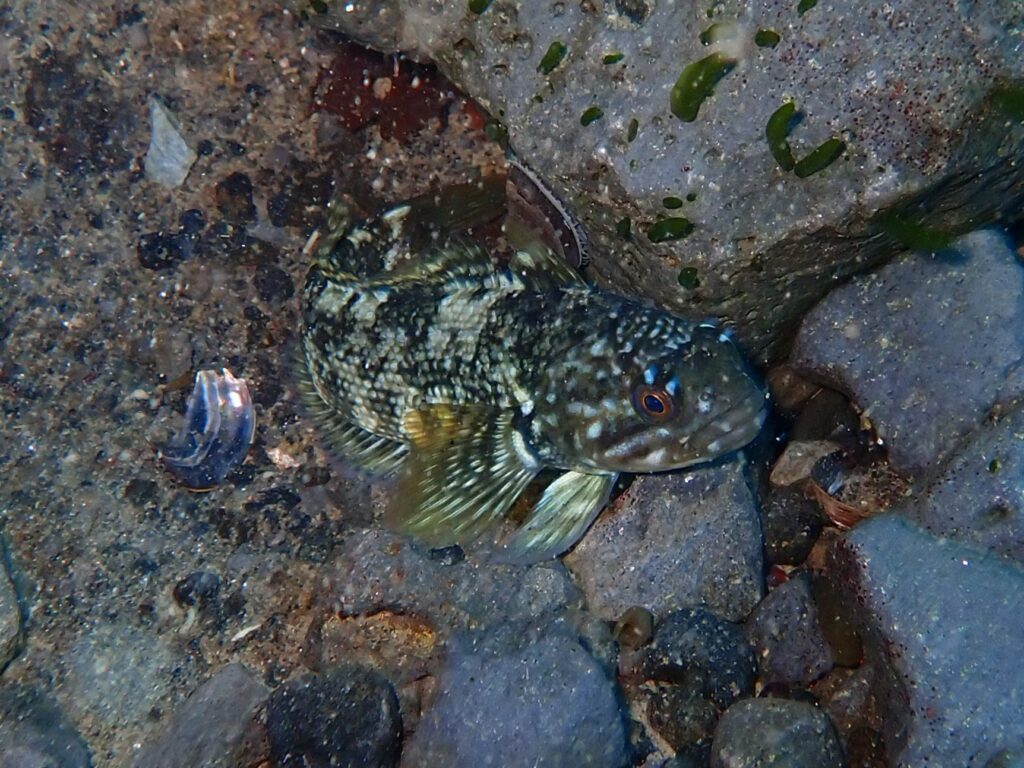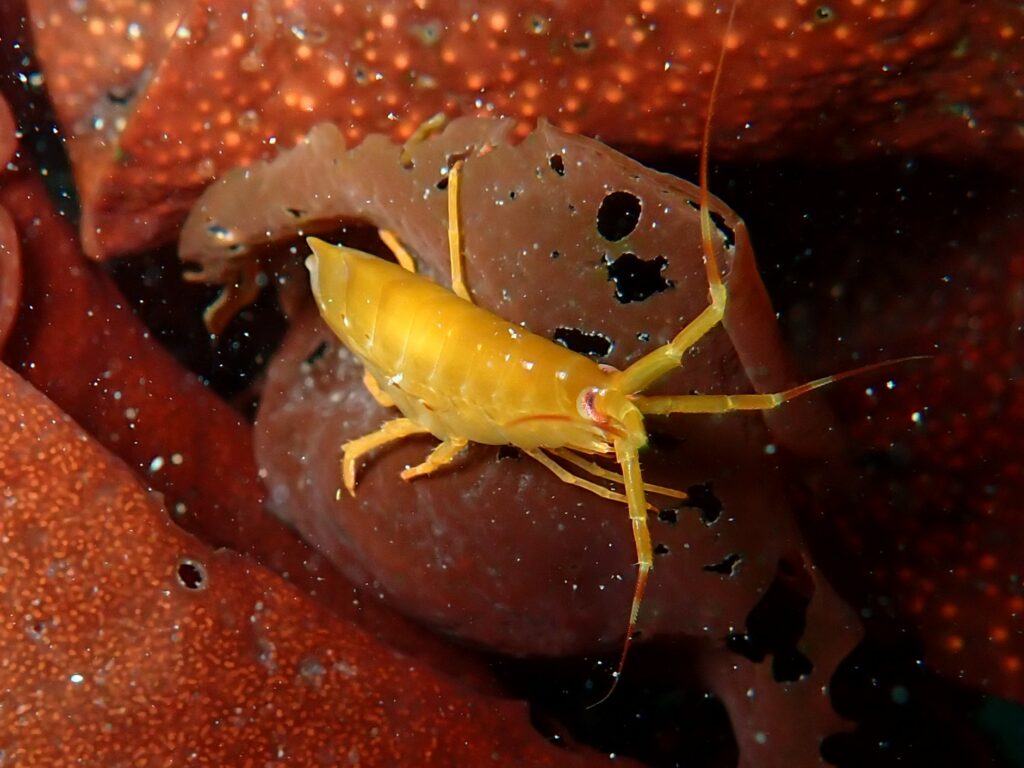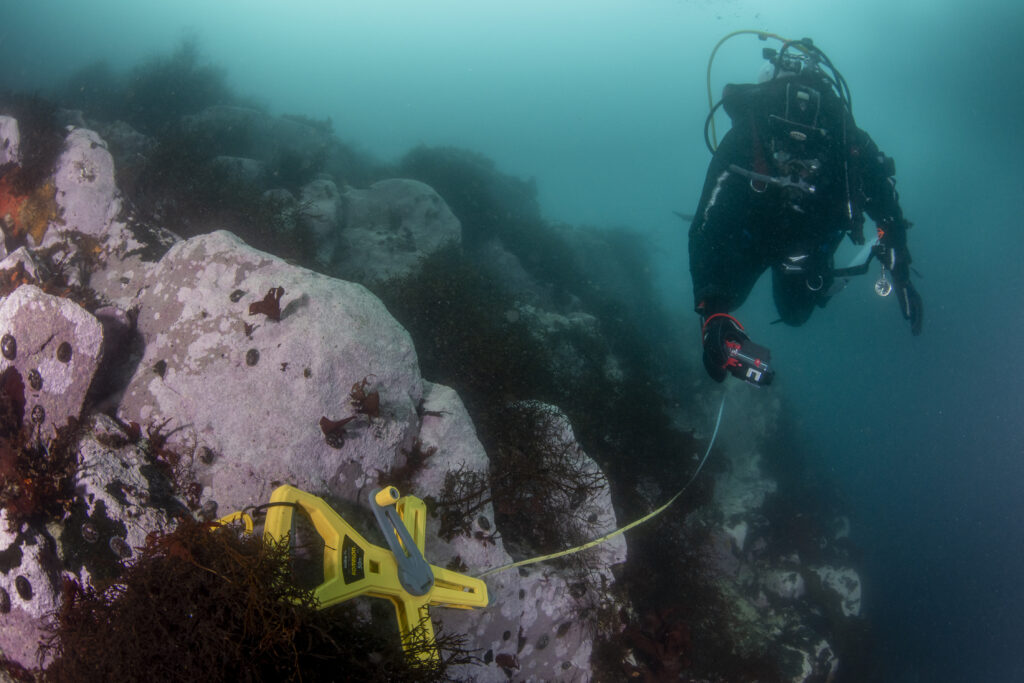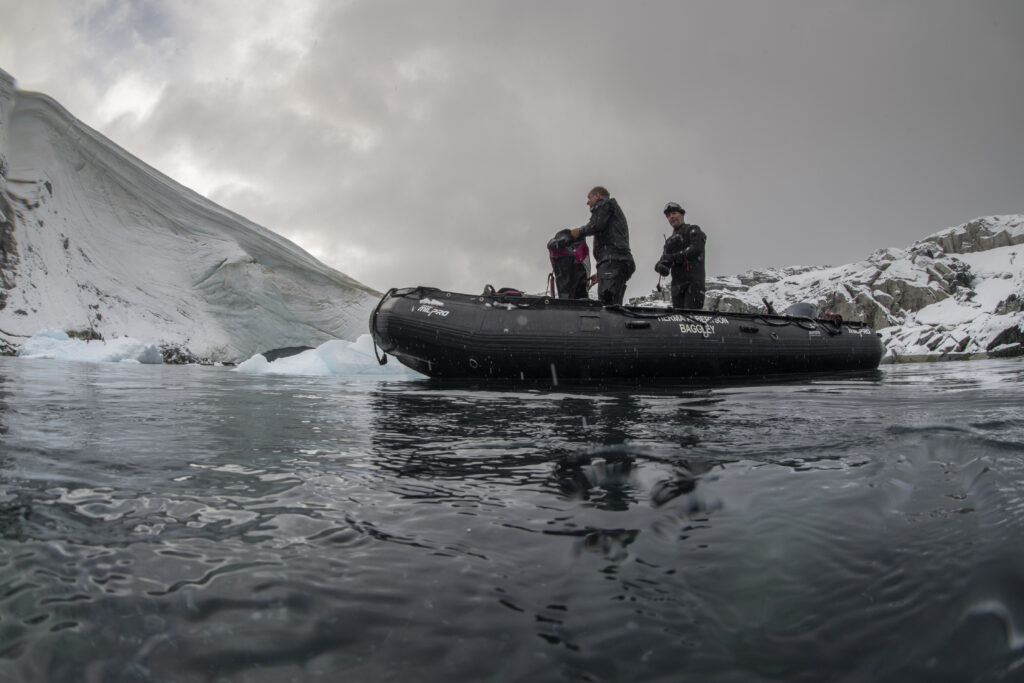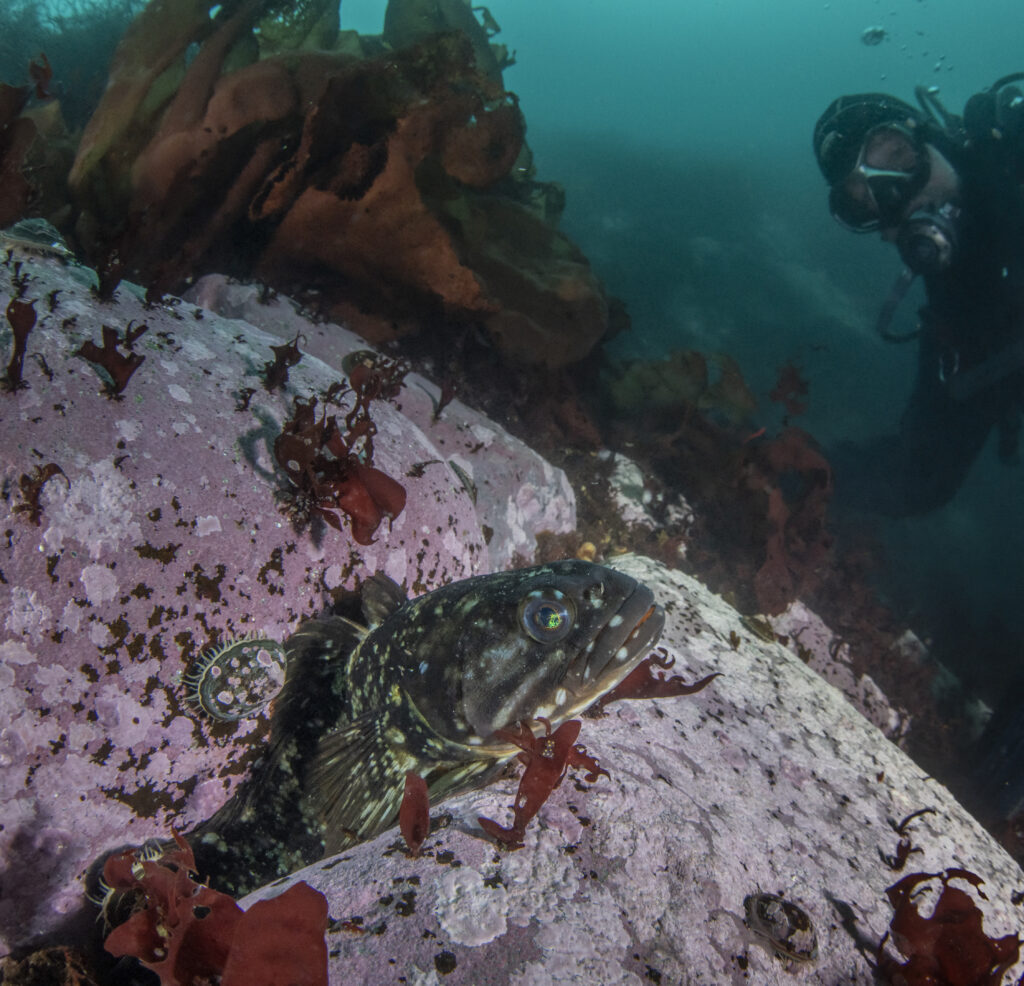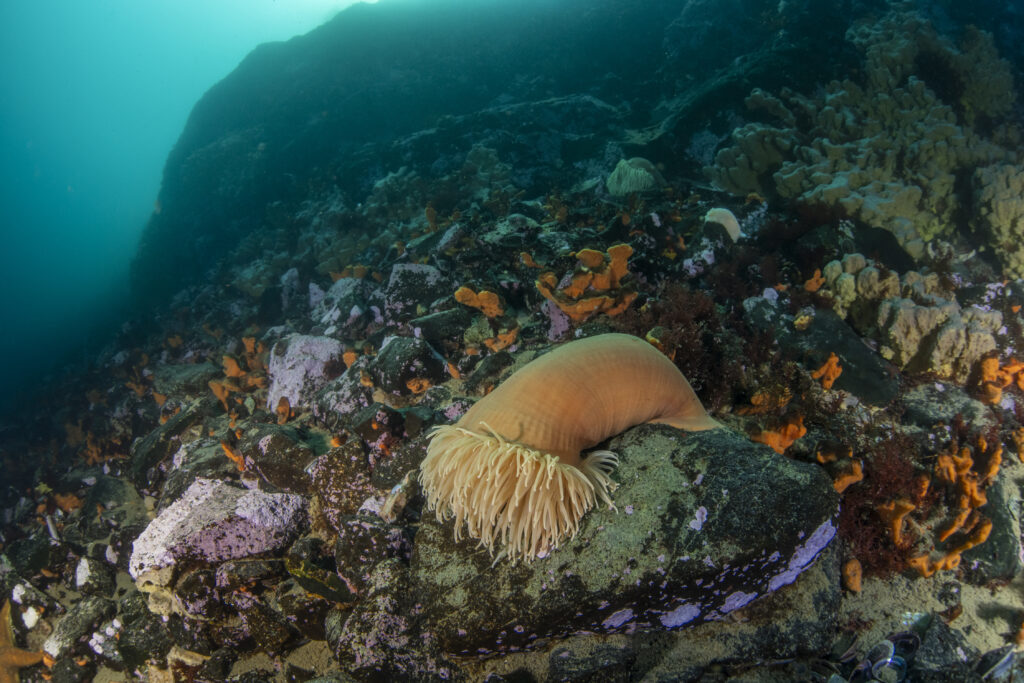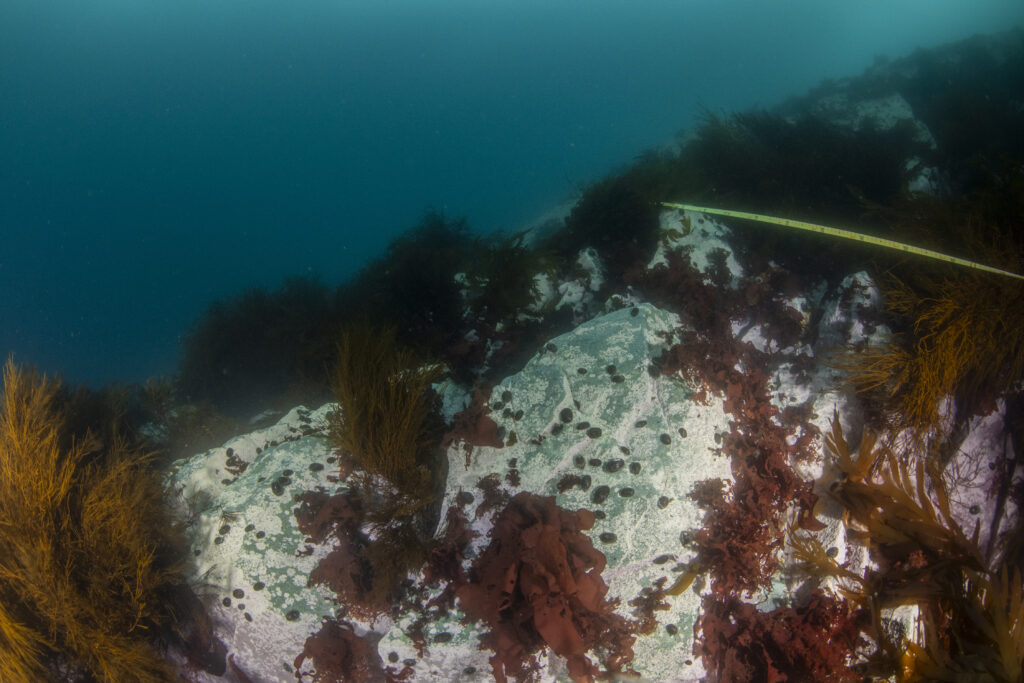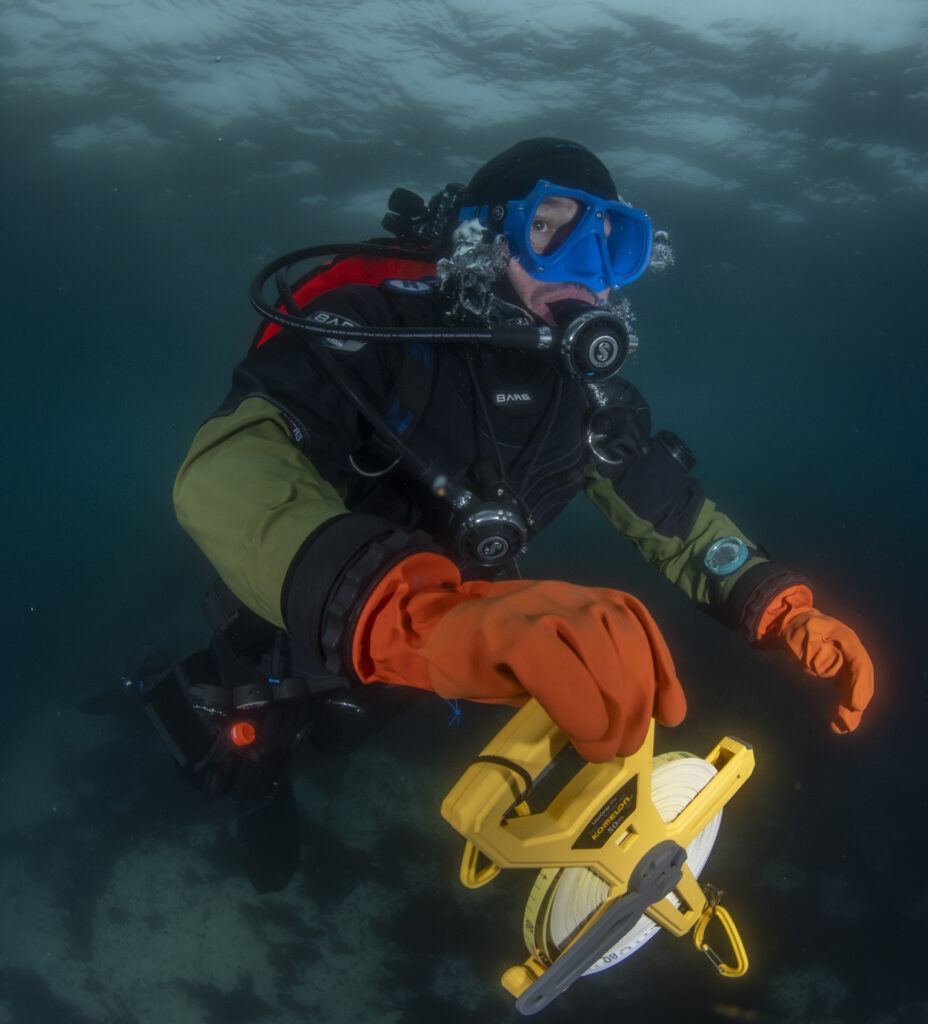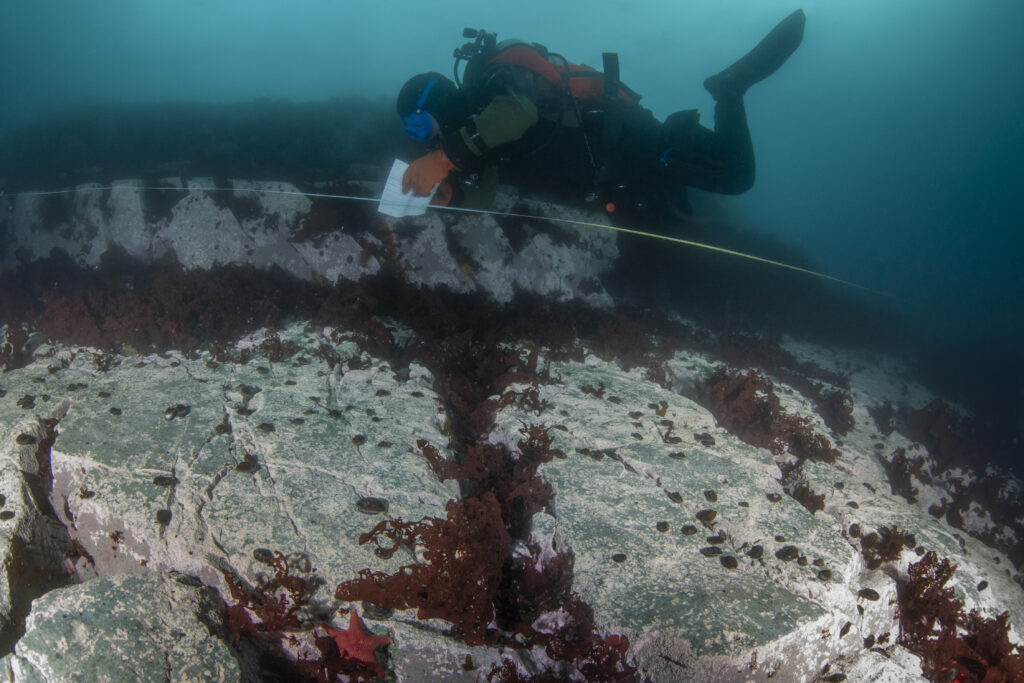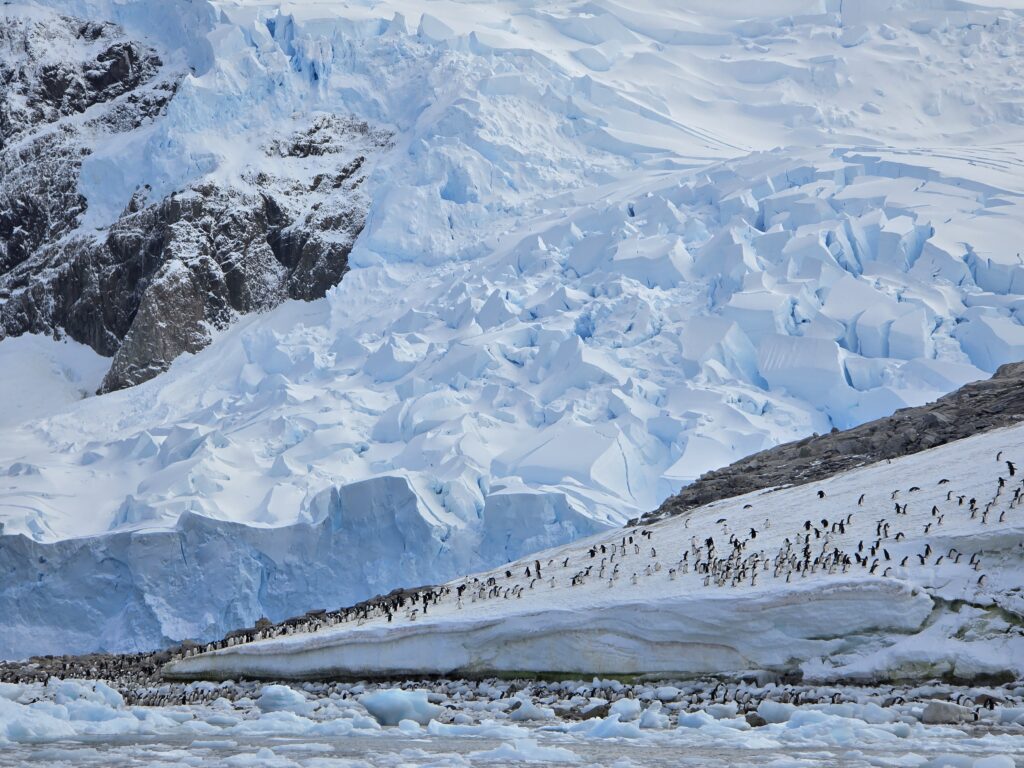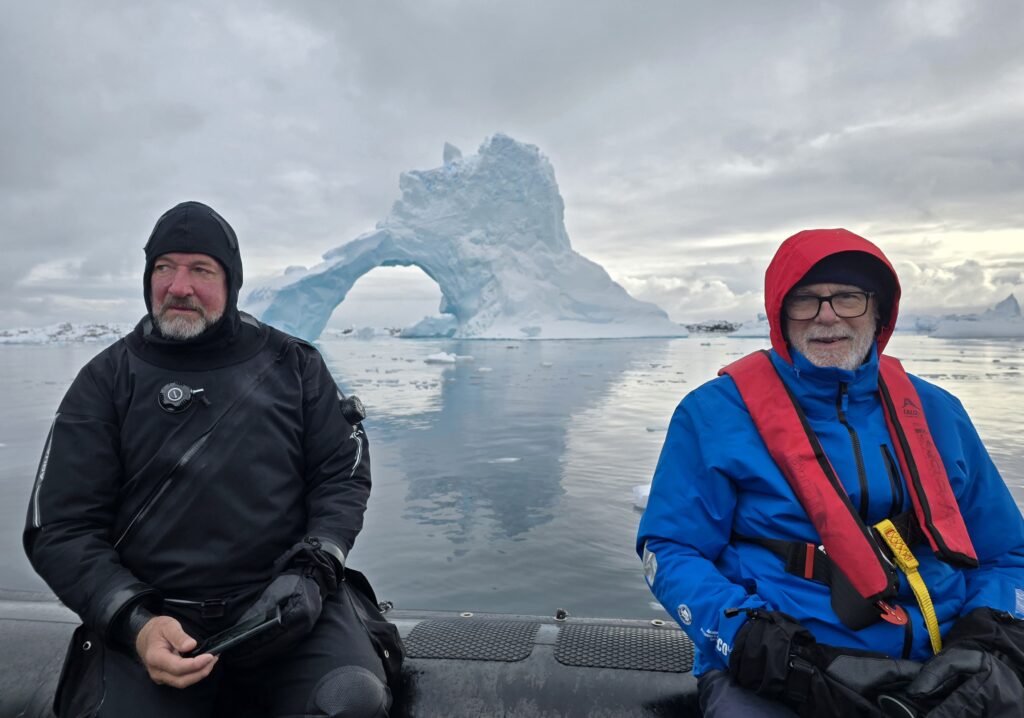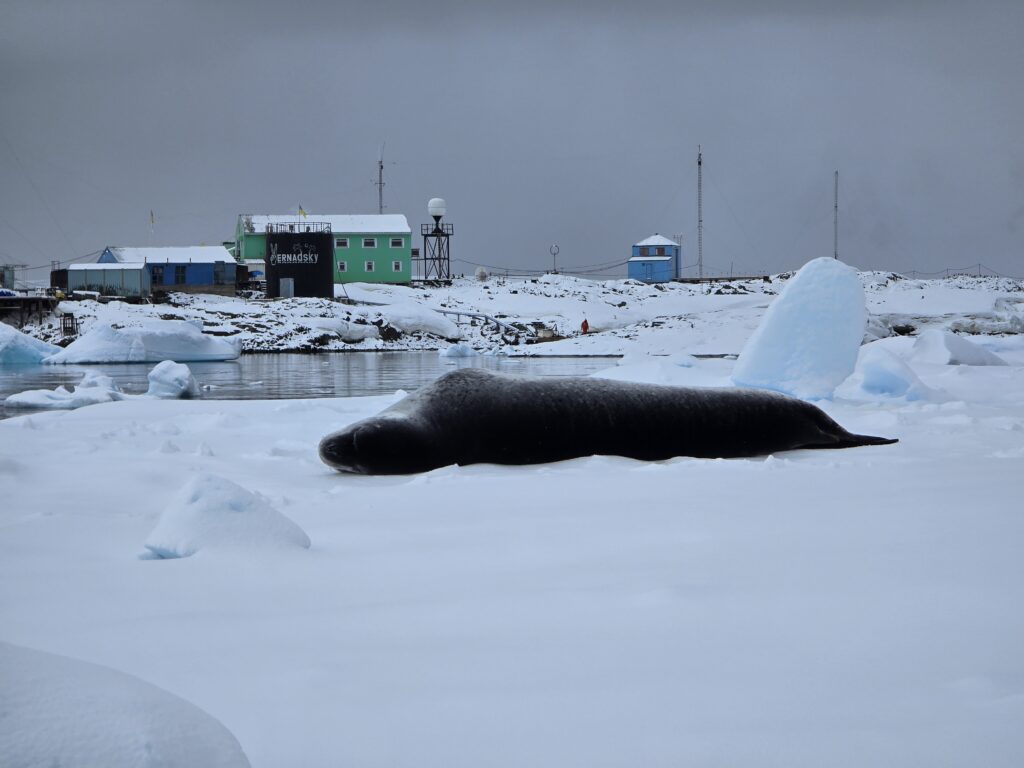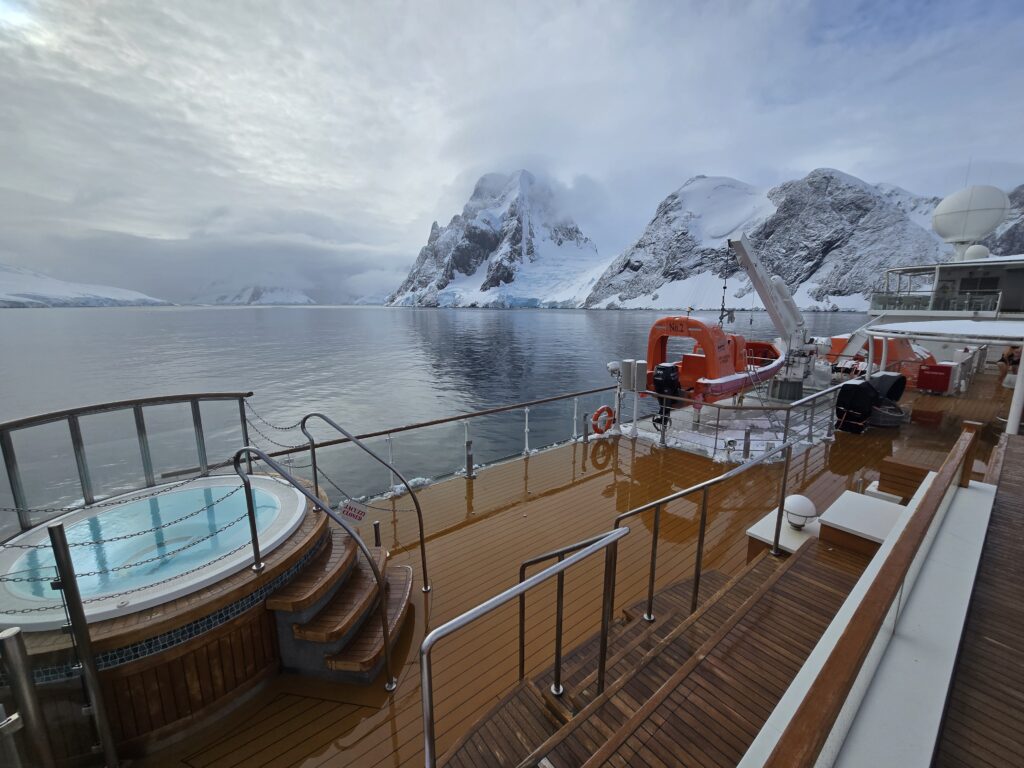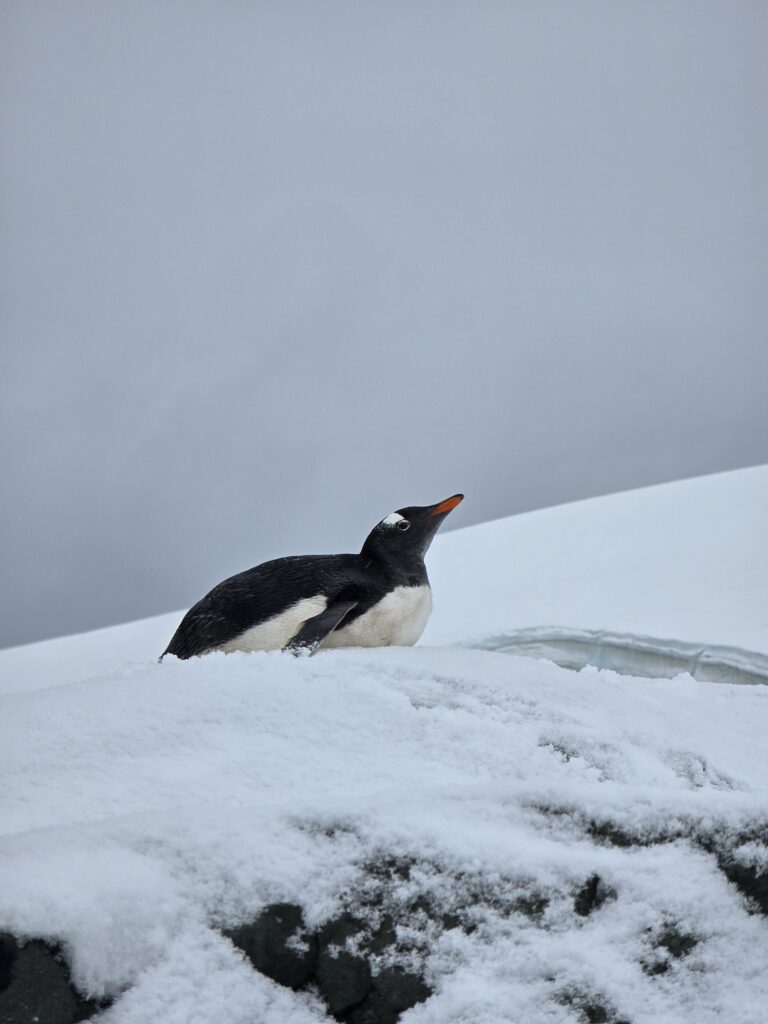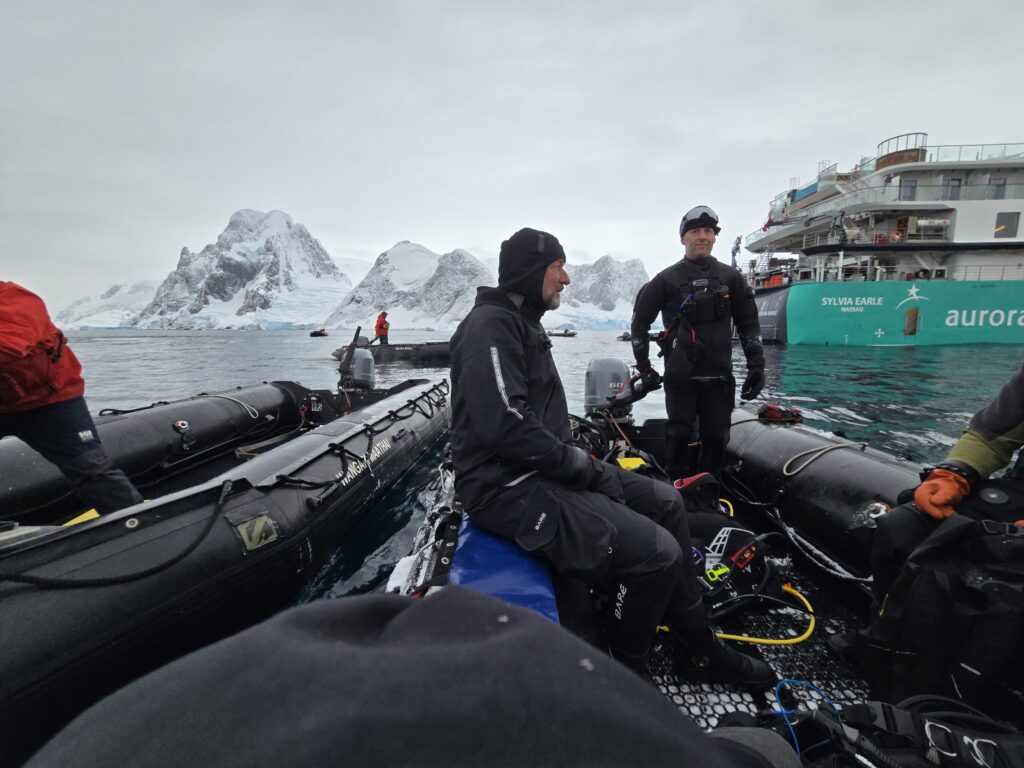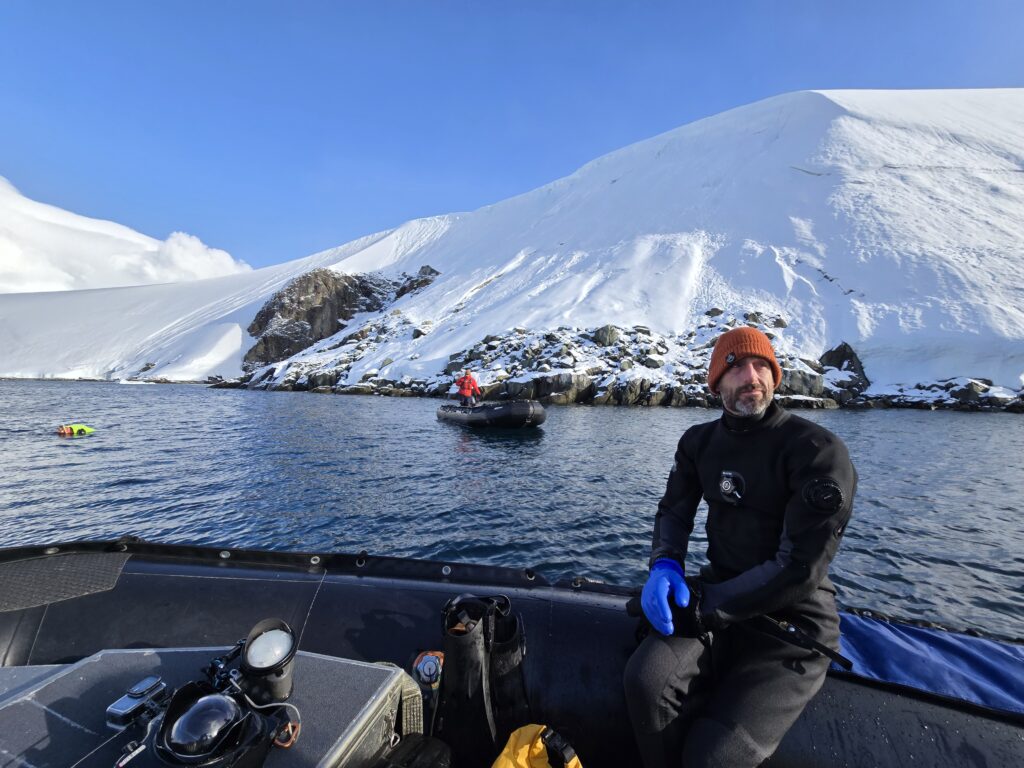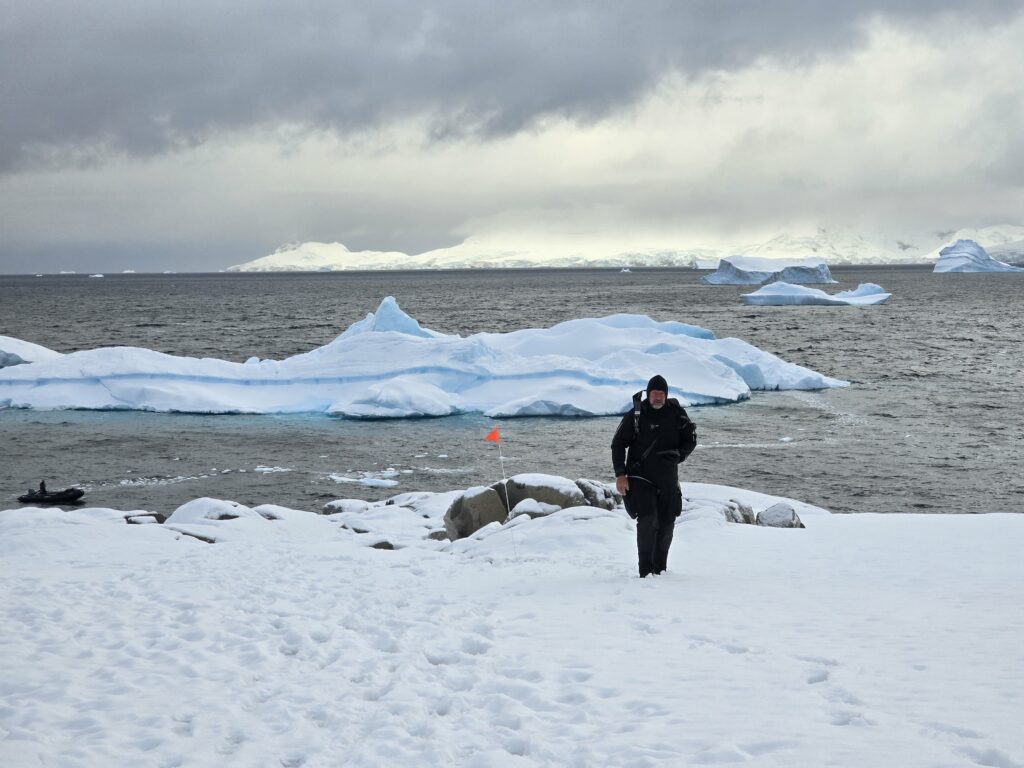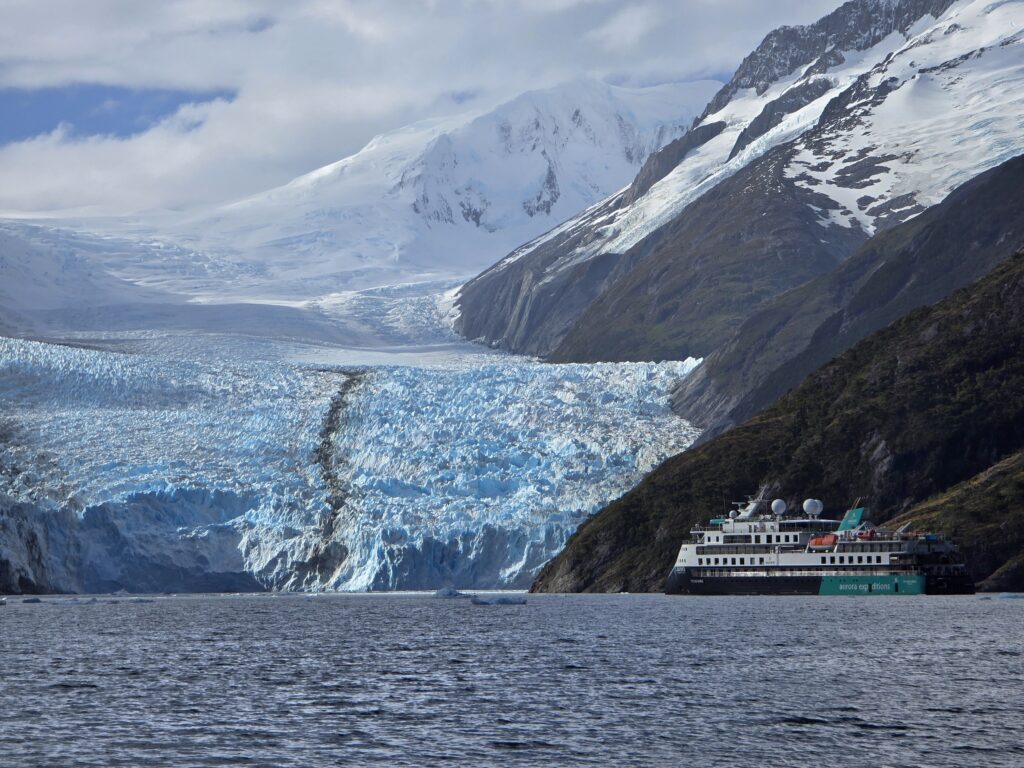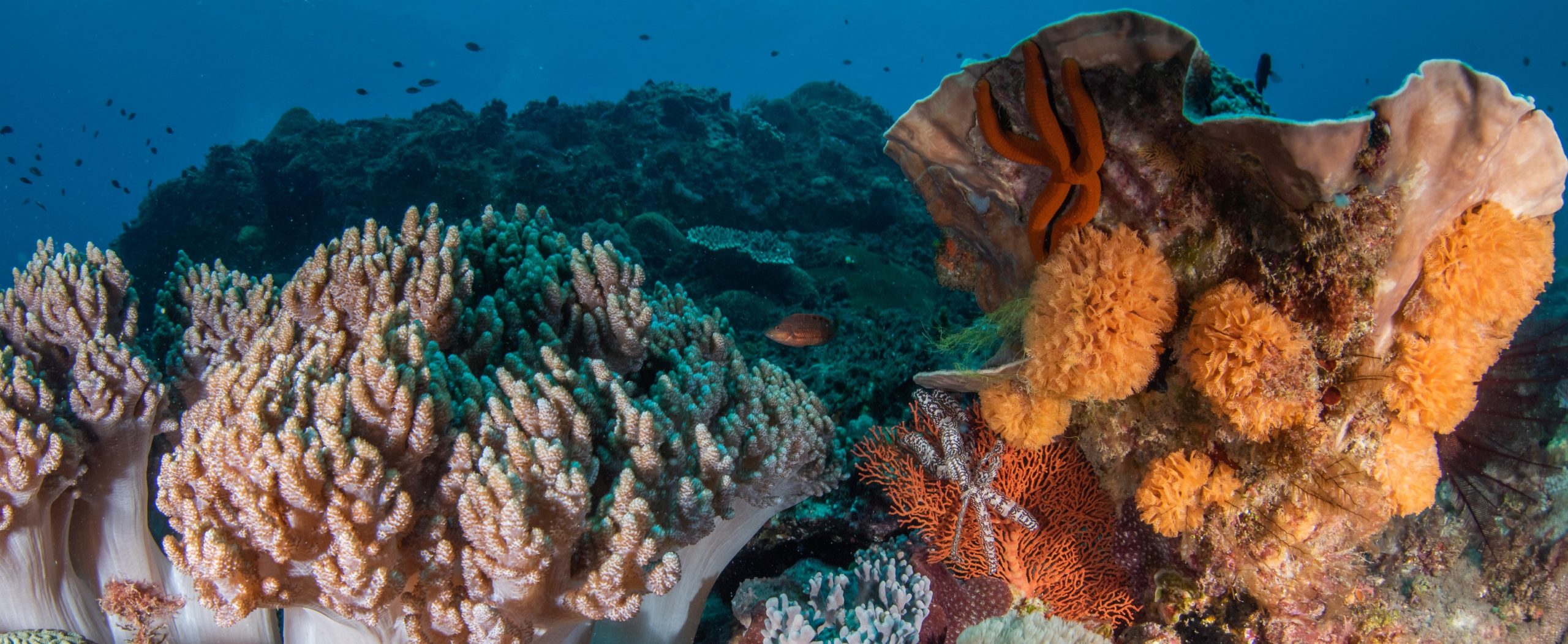“That was one of the best days of my life”, Rick declared, after diving with penguins, sailing through the Gerlach Strait with ice-covered mountains hemming either side of the narrow passage way, whales in the distance, all topped off by a steamy spa bath, a stupid hat dinner and lobbing snowballs on the front deck. His comment pretty well summed up every day of our visit to the Antarctic Peninsula.
With fantastic support from Aurora Expeditions, Rick, Ed Parnell (US RLS scientific collaborator) and I were filling in a bucket list item. We were expanding our Reef Life Survey database in the Antarctic, diving further afield than the Rothera base, where British scientists had previously completed RLS transects. What we found was a completely different world.
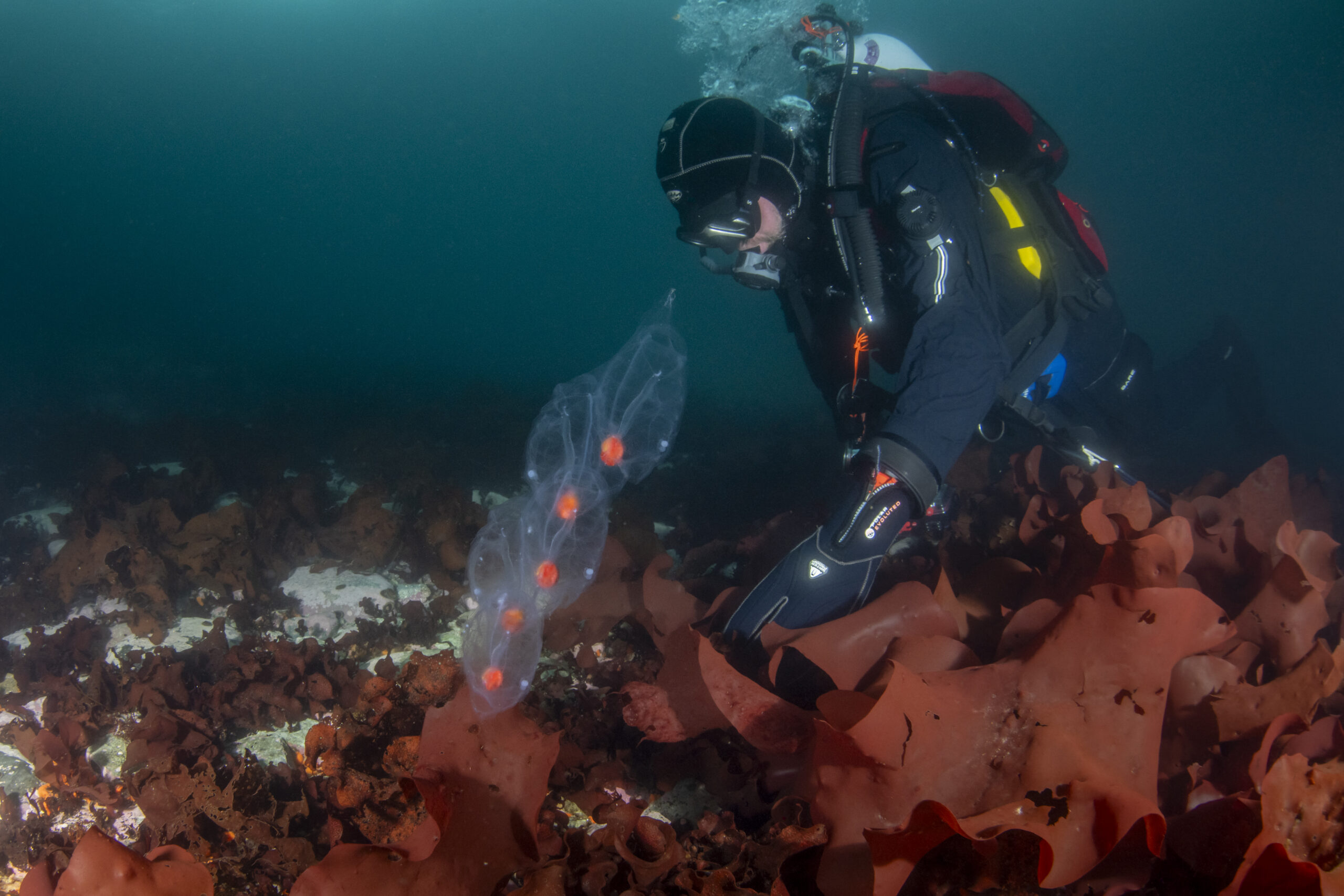
Entering that world also involved a different diving style. On the first dive we resigned ourselves to the lack of independence in the Michelin man drysuits. Darren and Thomas —the Aurora dive guides—helped us prepare for dives in what are normally simple tasks.
The -1.5 degree water froze our faces for perhaps a second on entry, but for the rest of our 30-40 minute dives the cold was not an issue as we laid transect tapes, recorded invertebrates, and explored our surrounds.
Fishes were scarce, with only three species seen, generally only one or two individuals per transect. Black cod (Notothenia coriiceps) were the largest in size, growing up to 62 cm according to field guides although our animals didn’t exceed 30 cm. One school lurked under the 110 year old wreck of a Norwegian whaler – the Governoren.
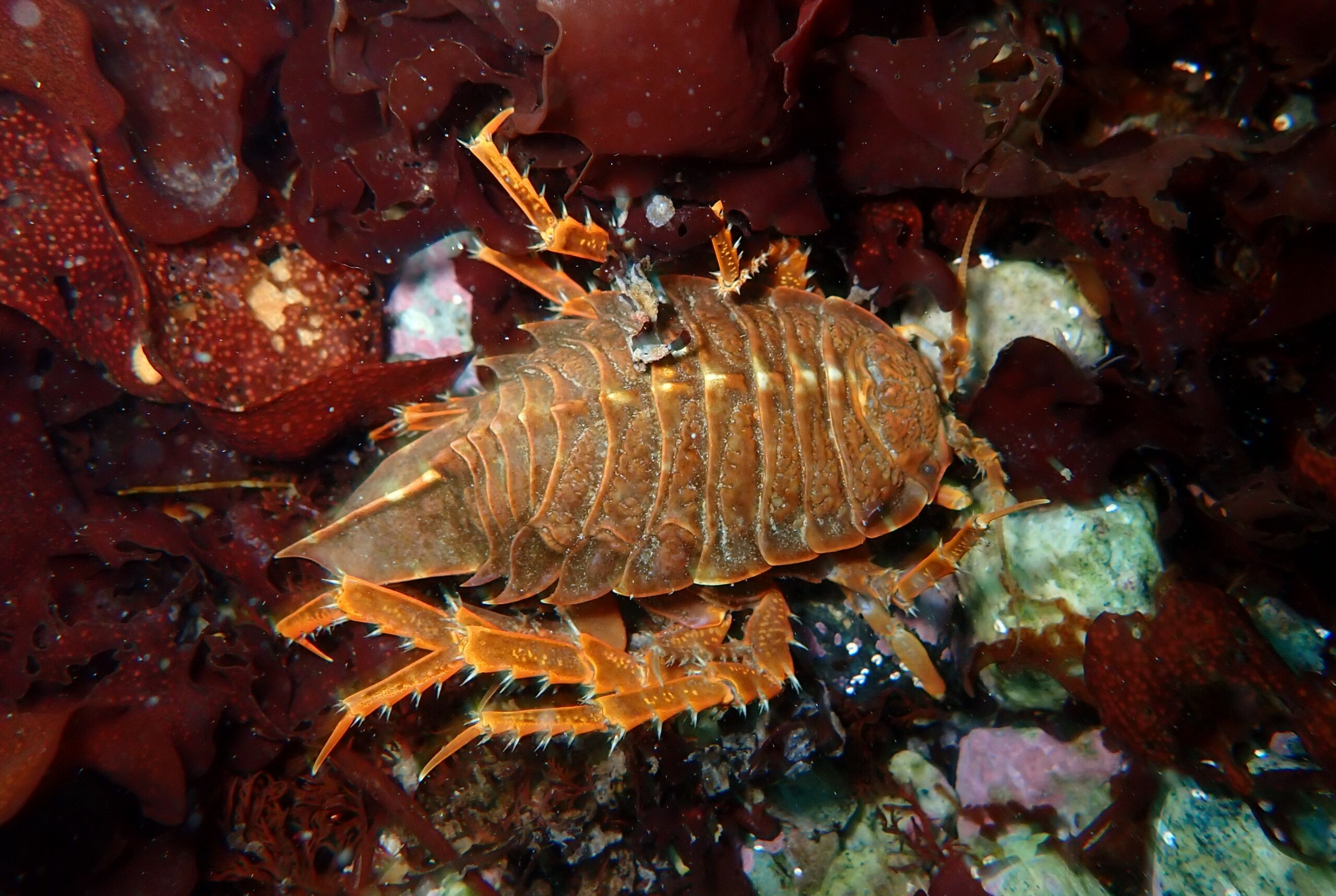
Limpets were hyperabundant, with over 1,000 individuals counted on some transect blocks. Other invertebrates made up in interest for our lack of fishes. In particular, the spiky isopod crustacean Glyptonotus (a close relative of slaters hiding under garden logs) was one animal that I was very much hoping to see—a colossus in its family group.
Other polar species that exhibit gigantism include the pycnogonid sea spiders. These all-leg invertebrates are typically less than a centimetre in size at home but here reached over 10x that size. Sea stars were more normal in size, and common, with a large range in species.
In order to complete transects, our dives were limited to 12 m depth, and the seabed where we dived had been affected by ice scour. Large patches of red algae and a pink coralline crust dominated the seascape at our 10 sites surveyed. Other divers explored deeper and found many more sponges and anemones, and fish species we had missed. Next time!
